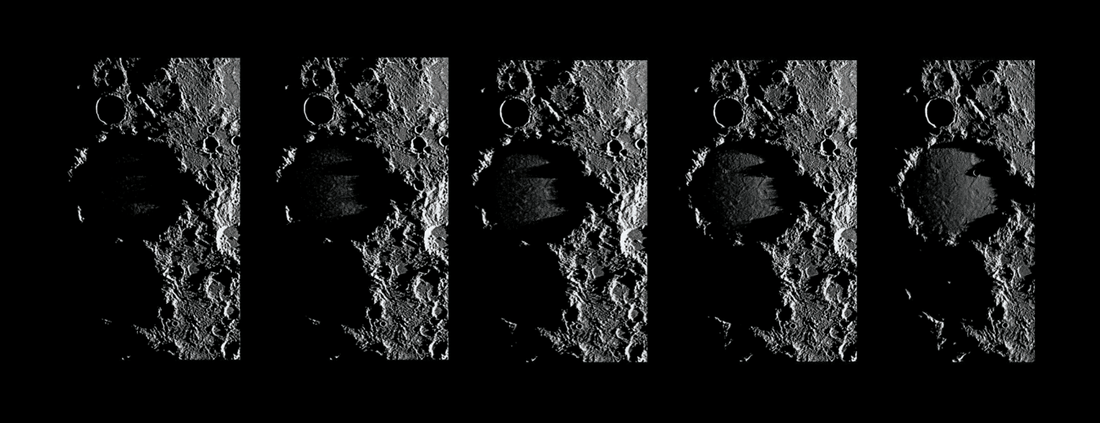The commonly held belief that the Moon is a unchanging entity is put to the test by the sight of the sunrise moving across the Ptolemaeus crater. Observing the event from March 27, 2015, over a period of two hours, it becomes evident that the Moon does indeed change before our eyes if we take the time to look.
Ptolemaeus, a crater located near the center of the Moon's visible surface, spans 154 kilometers and was created billions of years ago, predating the creation of the large basins that form the dark maria on the lunar surface. Despite its ancient age, the floor of Ptolemaeus appears surprisingly smooth compared to most craters, as it was buried by the massive amount of debris and rocks hurled by the titanic impacts that created the basins. As a result, even its central peak was obscured by the storm of debris.
In the images captured of sunrise over Ptolemaeus, the slow retreat of saw-toothed shadows can be seen as the Sun rises above the rough eastern rim of the crater. Unlike the rapid sunrise we experience on Earth, where the Sun takes only two minutes to rise above the horizon, the Moon's much slower rotation rate causes the Sun to take nearly an hour to fully rise above the lunar horizon, providing us with a leisurely spectacle as the shadows gradually recede.





